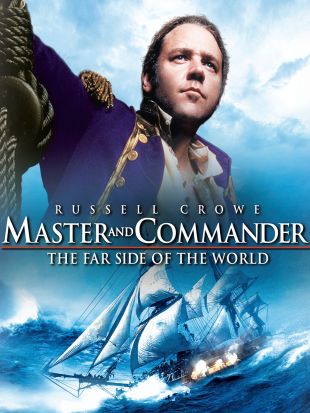
Master and Commander: The Far Side of the World is a beautifully realized, atypically intimate action drama. After an absence of five years, director Peter Weir has made a bold and impressive return. With high seas films notoriously difficult to manage in regards to both budget and box-office marketability, Master and Commander deftly avoids the pitfalls and stands as one of the high points of the genre. The film's attention to period detail is fascinating and renders the setting of the ship as a character all its own. The film is so rich with detail that one gets an almost authentic sense of what everyday life was like on such a ship in the early 19th century. Accolades must go out to all of those involved with art direction, set design, and cinematography. Director of photography Russell Boyd, who has worked with Weir on several previous films, works wonders here, capturing images from seemingly any angle from which one could film a ship. His sweeping photography deftly conveys the grandeur and scope of the ship(s) against the backdrop of the sea, the minute details of life on the ship, and the claustrophobic, crowded lives of the men on board.
Sporting an impressive cast of both stars and unknowns, young and old, Master and Commander reigns in their talents to create an utterly convincing ensemble of characters. Perfectly cast as Captain Jack Aubrey, Russell Crowe, not-surprisingly, delivers another layered, intriguing performance. Equally, if not more, impressive is the moving portrayal of ship surgeon Stephen Maturin by Paul Bettany, who sinks into the role and reveals further depths to his acting. The two men, captain and surgeon, display an interesting friendship, characterized by mutual interests (playing music together), sharp divisions (military vs. nature/science), and hearty debate. But between them, and between all of the men on the ship, there is a great sense of mutual respect that is the heart of the film. Also noteworthy, among several impressive youths, is newcomer Max Pirkis as Lord Blackeney, a young midshipman who must deal with a very emotional loss early in the film.

Despite all of its successes, the film does pose a few problems, the most notable being the incomprehensibility of much of its dialogue. Along with the film's attention to period and nautical detail, many of the accents and terminology are difficult to grasp, especially when characters are talking fast or dialogue is spoken in the heat of battle. But even that does not deter one from becoming engrossed in the intrigue and drama of the film; in fact, the period accents and dialogue further set one in another time and place, where things are both foreign and strangely relatable. Master and Commander: The Far Side of the World is a rare feat -- a quiet action film. Though the scenes of battle and broken bodies are brutal and gruesome, and every cannonball threatens to crush bones as callously as it shatters wood, much of the film is calm and contemplative. Weir has managed to craft a masculine, yet emotional, film that draws one in to the lives and world of the characters it portrays without necessarily offering too much detail as to their personal stories. In this way, it is a collective, balanced story and not simply a spotlight for any one actor.
